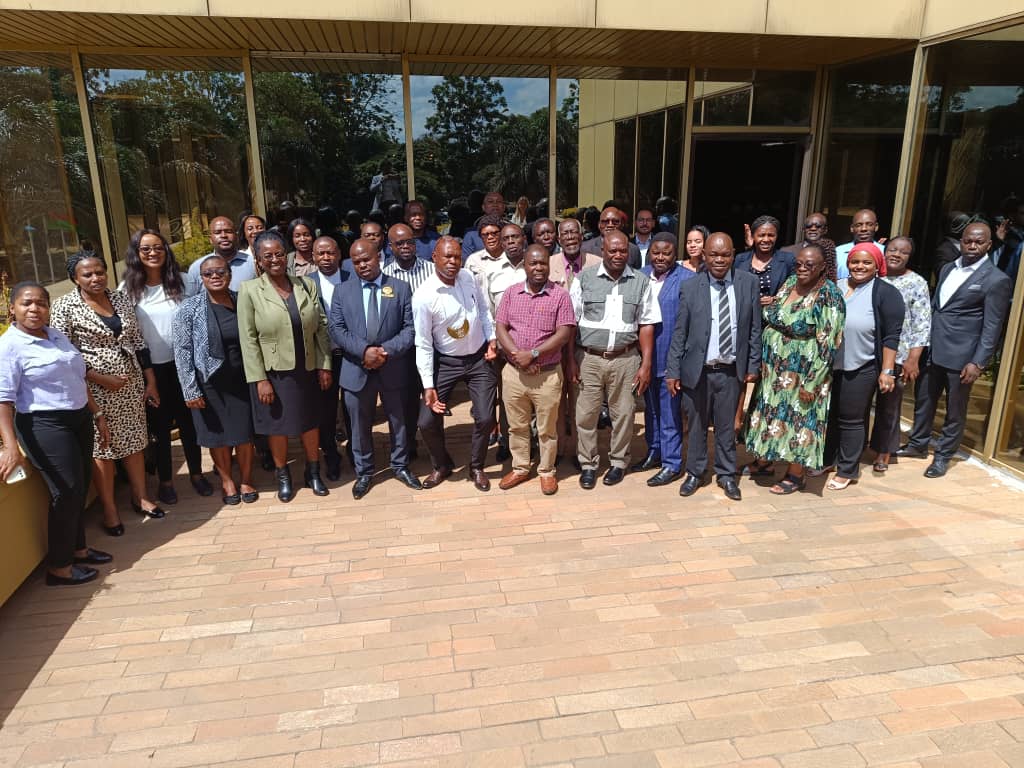|
Getting your Trinity Audio player ready…
|
Great Zimbabwe Development Project (GZDP) by its nature and scope calls for multi-stakeholder participation for the successful implementation and realization of project objectives.
This emerged yesterday (4 April 2023) during the GZDP National Steering Committee (NSC) Sensitisation Meeting held at the Rainbow Towers Hotel in Harare.
This was revealed by Selesio Zvawada, the Project Manager of the GZWHS Project under UNOPS Zimbabwe.
“The Great Zimbabwe Development Project by its nature and scope calls for multi-stakeholder participation for the successful implementation and realization of project objectives. Following the Inception Phase, stakeholder mapping finds these partner contributions critical to the achievement of project objectives.
“As such, today the Project through the National Museums and Monuments of Zimbabwe (NMMZ) invites stakeholders’ most valued contributions to the project implementation in the respective relevant technical areas. Stakeholders are also invited to participate in the Project Governance processes through the Technical Management Committee (Masvingo Province-based representatives) and the National Steering Committee (senior management at the national level,” Zvawada said.
In welcome remarks delivered on behalf of Mr. D. Munyikwa, the NMMZ Deputy Executive Director, Mr. Lovemore Mandima (Regional Director -Southern) said the Great Zimbabwe Development Project has come a long way since its launch by President Mnangagwa in June 2022.
“Since then, the project was in an inception phase which among other this was meant to, better understand the scope of work across all 4 pillars of the project, identify potential stakeholders and working arrangements, understand some of the key processes the project needs to go through and comply with given that it a world heritage site, put in place the project governance structure
“The Project agreed on two operational bodies for Governance – The Technical Management Committee and National Steering Committee. Today’s meeting is basically meant to sensitise the NSC members on what the project is about and their roles and responsibilities as a governance body going forward. The NSC is entrusted with a huge responsibility to provide proper guidance and leadership to the project. This is a unique project in which we are challenged to deliver to Zimbabwe while maintaining the Outstanding Universal Values of the GZWHS. I believe the NSC members have what it takes to live up to the expectations,” Mr. Mandima said.
The Rehabilitation and Development of the Great Zimbabwe Heritage Site project contribute to the promotion of Zimbabwe’s cultural heritage locally, regionally, and internationally. The project will provide financing to strengthen the National Museums and Monuments of Zimbabwe’s capacity to conserve and document the site. In addition, infrastructure will be renovated and upgraded, and a private operator established for commercial management and marketing of the site.
The project will facilitate the development of a rural land management plan and support local communities with a cultural programme to express Shona culture within a cultural hub and improve community management of resources.
The project will develop the Great Zimbabwe Historic Site, in order to provide visitors with access to facilities that will meet international standards. This will promote Zimbabwe’s cultural heritage locally, in the region, and internationally. The project will support capacity building for heritage preservation and develop revenues for local communities and long-term economic sustainability. The support for local communities will reinforce cultural and educational programming, provide diverse offers for tourists and attract a wider public.
